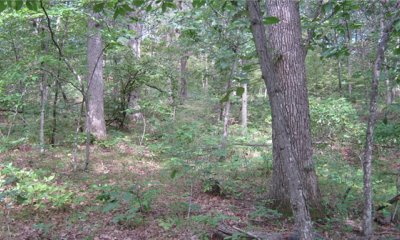
Till Upland Woodland
Scenario model
Current ecosystem state
Select a state
Management practices/drivers
Select a transition or restoration pathway
- Transition T1A More details
- Transition T1B More details
- Restoration pathway R2A More details
- Transition T2A More details
- Restoration pathway T3B More details
- Transition T3A More details
- Transition T3C More details
- Restoration pathway T4B More details
- Transition T4A More details
- Restoration pathway T5A More details
-
No transition or restoration pathway between the selected states has been described
Target ecosystem state
Select a state
Description
The reference state for this ecological site was old growth oak woodland. The woodland was dominated by white oak and black oak. Maximum tree age was likely 150-300 years. Periodic disturbances from fire, wind and ice as well as grazing by native large herbivores maintained the woodland structure and diverse ground flora species. Long disturbance-free periods allowed an increase in both the density of trees and an increase in abundance of shade tolerant species. Two community phases are recognized in the Reference State, with shifts between phases based on disturbance frequency. Reference states are very rare today. Fire suppression has resulted in increased canopy density, which has affected the abundance and diversity of ground flora. Most Reference States are currently altered because of timber harvesting, domestic grazing or clearing and conversion to grassland or cropland.
Submodel
Description
Composition is altered from the Reference State depending on tree selections during harvesting. This state will slowly increase with more shade tolerant species and white oak will become less dominant and is also dense because of fire suppression. Without periodic canopy disturbance, stem density and fire intolerant species, like hickory, will increase in abundance. Uncontrolled grazing if present will also have an impact on community composition and understory quality diminishing the diversity of native plants and introducing species that are tolerant of grazing, such as buckbrush, gooseberry, and Virginia creeper and will transition the site to a High-Graded/Grazed Woodland.
Submodel
Description
States that were subjected to repeated, high-grading timber harvests and uncontrolled domestic grazing will transition to a High-Graded, Grazed Woodland State. This state exhibits an over-abundance of hickory and other less desirable tree species, and weedy understory species such as buckbrush, gooseberry, poison ivy and Virginia creeper. The existing vegetation offers little nutritional value for cattle, and excessive cattle stocking damages tree boles, degrades understory species composition and results in soil compaction and accelerated erosion and runoff. Two common transitions from this state are woody clearing and conversion to State 4, Grassland or removing livestock, limited harvesting, and allowing long term succession to occur to some other woodland or forest state.
Submodel
Description
Conversion of woodlands to planted, non-native cool season grassland species such as tall fescue and red clover is common for this region. Two community phases are recognized in the Grassland State, with shifts between phases based on types and levels of management. Poor management will result in a shift to Community 4.2 that shows an increase in oak sprouting and increases in broomsedge densities. If grazing and active pasture management is discontinued, the site will eventually transition to State 2 or if grazing is continued will transition to State 3.
Submodel
Description
This State exists currently with intensive cropping of corn, soybeans, and wheat occurring especially when commodity prices are high. Some conversion to cool season grassland occurs for a limited period of time before transitioning back to cropland. Limited acres are sometimes converted to native warm season grassland.
Submodel
Model keys
Briefcase
Add ecological sites and Major Land Resource Areas to your briefcase by clicking on the briefcase (![]() ) icon wherever it occurs. Drag and drop items to reorder. Cookies are used to store briefcase items between browsing sessions. Because of this, the number of items that can be added to your briefcase is limited, and briefcase items added on one device and browser cannot be accessed from another device or browser. Users who do not wish to place cookies on their devices should not use the briefcase tool. Briefcase cookies serve no other purpose than described here and are deleted whenever browsing history is cleared.
) icon wherever it occurs. Drag and drop items to reorder. Cookies are used to store briefcase items between browsing sessions. Because of this, the number of items that can be added to your briefcase is limited, and briefcase items added on one device and browser cannot be accessed from another device or browser. Users who do not wish to place cookies on their devices should not use the briefcase tool. Briefcase cookies serve no other purpose than described here and are deleted whenever browsing history is cleared.
Ecological sites
Major Land Resource Areas
The Ecosystem Dynamics Interpretive Tool is an information system framework developed by the USDA-ARS Jornada Experimental Range, USDA Natural Resources Conservation Service, and New Mexico State University.
